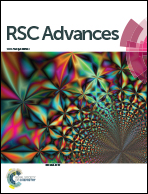Towards comprehension of complex chemical evolution and diversification of terpene and phenylpropanoid pathways in Ocimum species
Abstract
Ocimum species present a wide array of diverse secondary metabolites possessing immense medicinal and economic value. The importance of this genus is undisputable and exemplified in the ancient science of Chinese and Indian (Ayurveda) traditional medicine. Unlike several other plant species of Artemisia, Salvia, Catharanthus, Taxus, Mentha, etc. that are largely exploited, detailed characterization and identification of important metabolites from Ocimum species remained unexplored. Till date, most of the analyzed Ocimum species are predominantly rich in either phenylpropanoids or terpenoids. Metabolite data suggests domination of a unique set of signature compounds in all species. However, molecular pathways leading to the production, accumulation and metabolism of these compounds are poorly understood. The past few years have witnessed an upsurge in our understanding of the complex and intricately woven secondary metabolic pathways. Such information is generated through systematic analysis and correlation of metabolite profiling with transcriptomics data sets from different Ocimum species. The present review is aimed at integrating our current knowledge to understand the active secondary metabolic pathways, the key players in flux regulation including external stimuli, differential gene expression, transcription factors, microRNAs, enzyme promiscuity, etc. Extensive analysis of available data identifies events that may have contributed to evolve Ocimum species rich with a specific set of metabolites, thus, shedding light on pathway diversification. We believe that a better understanding of the multi-level regulation of intermediates and metabolites will help us harness the inherent diversity of Ocimum species optimally.


 Please wait while we load your content...
Please wait while we load your content...